When we first started our new garden beds, we had small plants separated by a lot of soil. Nature abhors a vacuum, so this area would inevitably quickly fill with weeds.
We also wanted to keep these young plants moist. For both these reasons, mulch was the answer. Long ago, before we started thinking about the use of chemical fertilizers and pesticides, we happily collected and used all the neighbors’ grass clippings.
This was before people started getting mulching lawn mowers. In those olden days, people simply bagged up the grass clippings and put them out to the curb, waiting for the town’s huge fossil-fueled dump truck and payloader to come scoop them up and take them away. This was also before our county’s Resource and Recovery Agency (OCRRA) heavily advertised their catchy “Leave your clippings on the lawn” jingle.
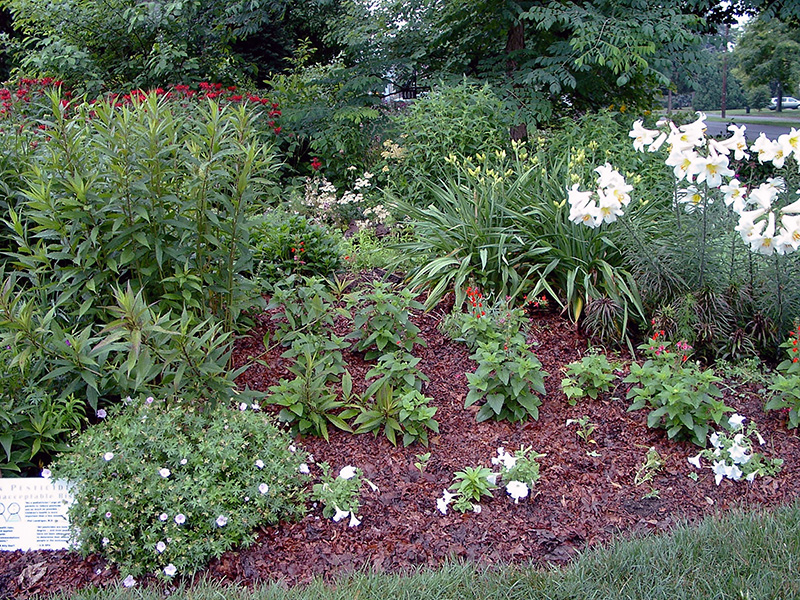
When we started feeling squeamish about all the chemicals in neighbors’ grass clippings, we bought a chipper/shredder and shredded leaves to use as mulch. (We later concluded that this also was unnecessary and polluting, so we sold it.)
And this photo is from the early stages of our habitat garden, before we were aware of the importance of native plants. Ornamental plants such as non-native lilies and daylilies, petunias and other bedding plants are visible… Needless to say, they’re no longer there as I’ve gradually replaced the non-natives with natives.
As time went by, however, our plants grew and spread, making it difficult to spread mulch between them.
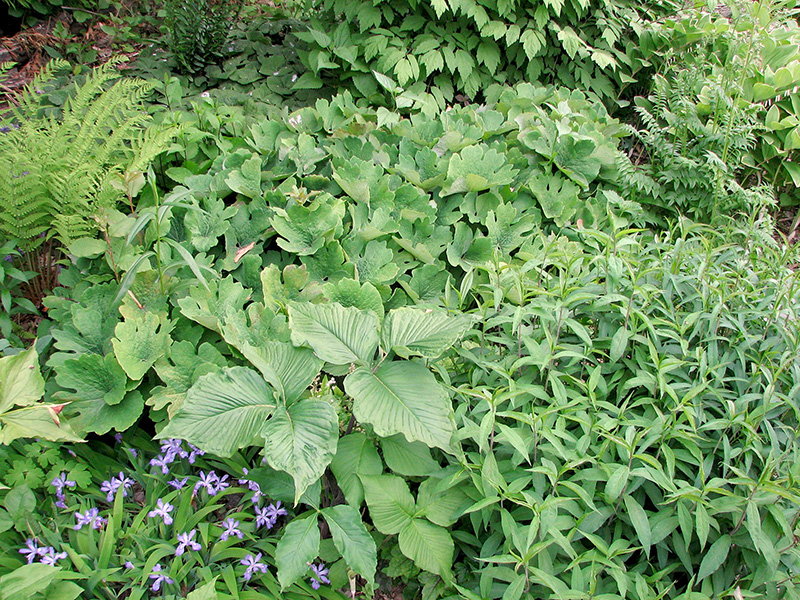
In fact, not only difficult, but unnecessary! The beds became self-mulching. The canopy of leaves keeps the soil cool and moist and keeps the ground shaded so weeds don’t grow as easily. And since we don’t rake up plants’ fallen leaves in the fall, they decompose and themselves enrich the soil. So now we just let plants grow close together.
As one article I read said, “Why mulch when you can plant?”
Our paths
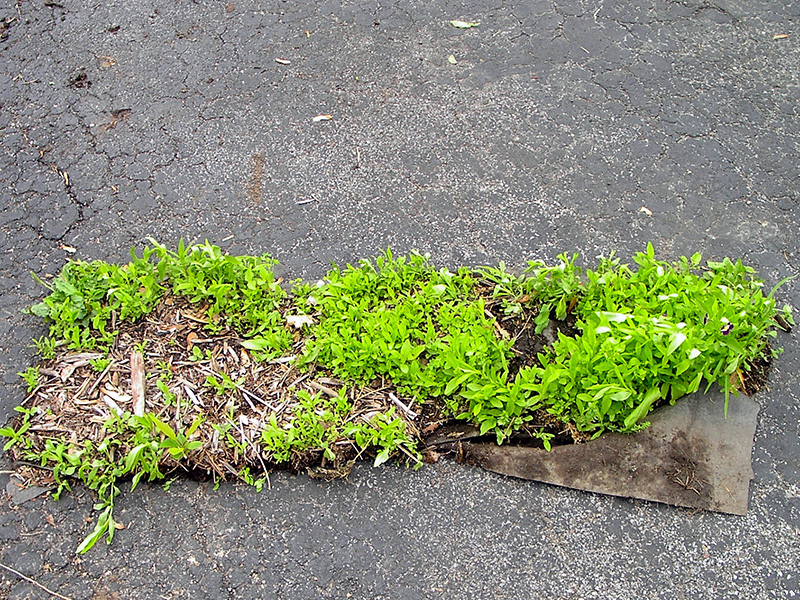
A separate issue is mulching the paths. At first, we used landscape cloth as a base for all our paths before adding the layer of wood mulch. Seemed like a logical thing to do to prevent weeds in the path.
Bad idea!
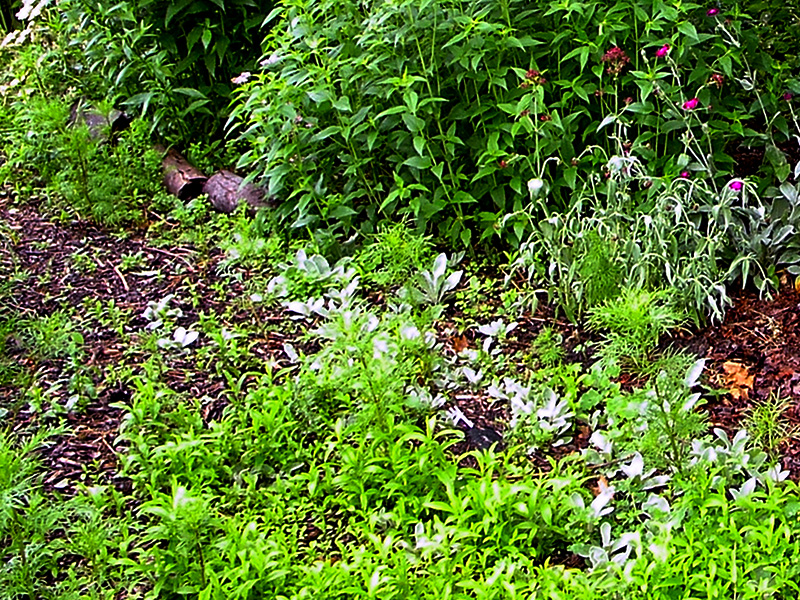
As so many other people have found, landscape cloth doesn’t prevent weeds from growing. They just grow on top of it. (It’s hard to tell from the photo, but the path is the left diagonal section.)
And it’s a real pain to remove.
Years later, we found an area that we had originally designated as a path but which had become a planting area. No wonder nothing but small weeds grew there! And upon removal we discovered very compacted soil. Not good.
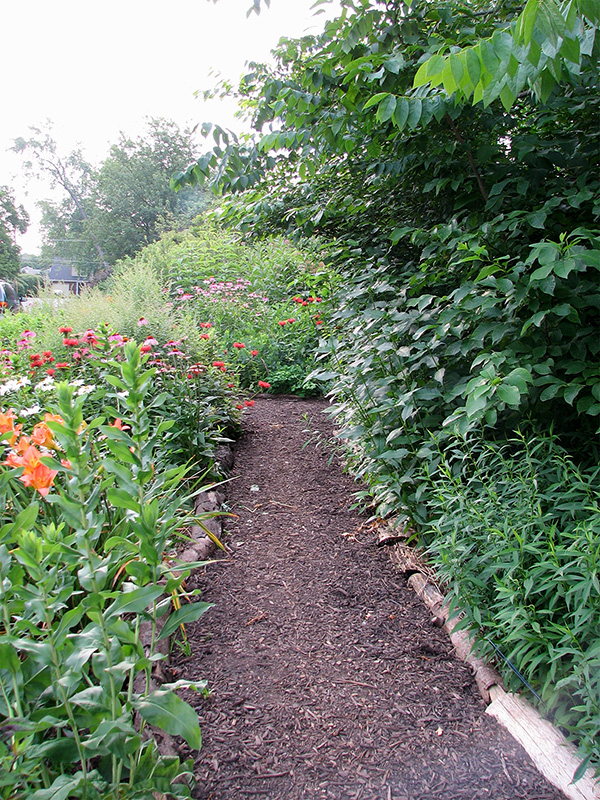
It would be too much work to try to remove the landscape cloth under the paths at this point, so we just manually remove the weeds with a rake and add new mulch every three years or so.
But a separate issue is the wood mulch itself.
I’ve since learned that wood mulch isn’t necessarily a sustainable product. (Apparently, this is especially true of cypress mulch, though I don’t think we ever used that type.)
Our mulch
We started by using mulch from the town and county mulch piles, free with a $10 yearly pass, so it felt like we were simply using something that was a waste product from the trees people were cutting down.
One year, we were fortunate to be able to rescue some wood chips that a neighbor put out to the curb after removing some trees.
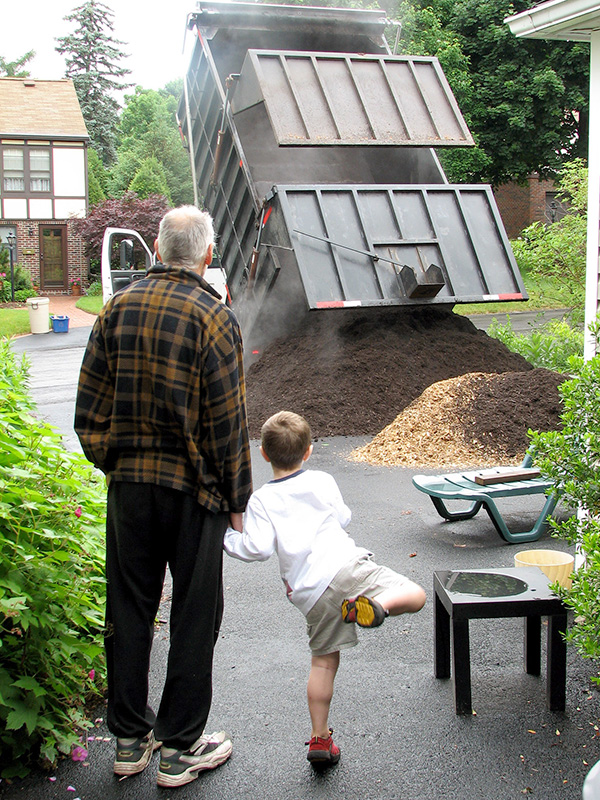
Generally, though, about every three years we’ve bought a truckload of mulch from a local garden center. I don’t know the source of their mulch, though judging from the horrifying number of mature trees being removed in our area, it may be the remains of those trees.
But when we think of the huge amount of mulch being sold by the big-box stores, we realize that this isn’t all being created by leftover tree-trimmings. All those trees cut down just to make planting beds look neat?
At this point, we have a thick layer of mulch and seem to be able to just pull the built-up mulch from the sides of the paths to the middle without refreshing the path with a new layer.
Currently, we can’t think of an alternative to wood mulch for our paths, but we’ll keep thinking about this.
At least we had help distributing it when our oldest grandson was visiting one summer!
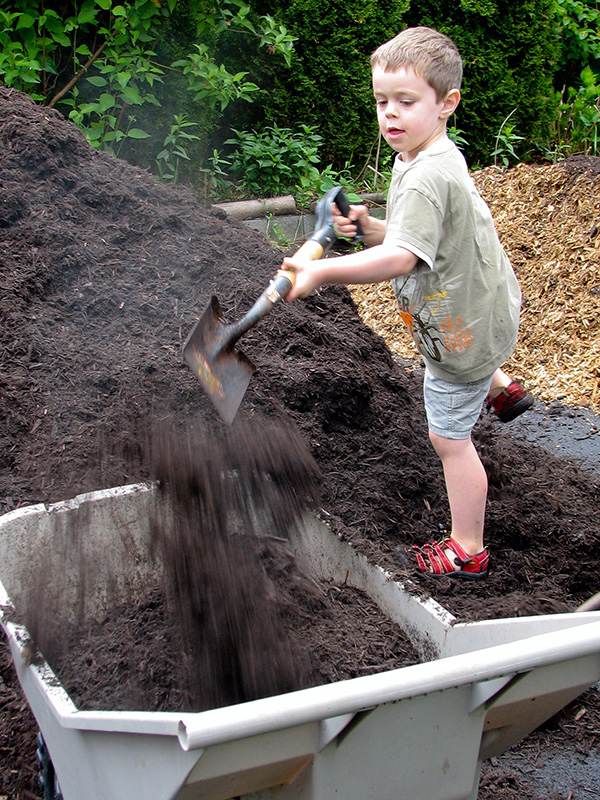
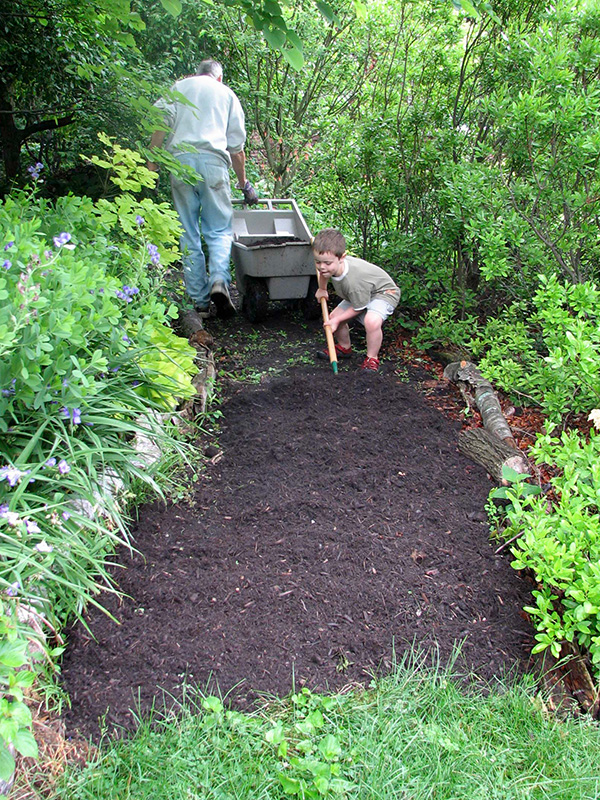
Dyed mulch?
There’s trend to use mulch dyed to different colors. (In our opinion it looks pretty tacky, but that’s beside the point.)
The bigger concern is that these mulches are apparently created from waste wood — old pallets and the like. And as waste wood, they often contain wood preservative chemicals such as chromated copper arsenate. This is apart from the chemicals in the dyes themselves, which probably aren’t as dangerous as those in the original wood products.
Not something I’d want to add to my landscape (besides the general tackiness … )
Resources
- Amanda’s Native Garden:
- Groundcovers – list of ground covers for sun and for shade
- New York Times:
- Westchester County:
- UMass Amherst:
Reflections
A basic law of almost any native ecosystem is that if nothing is currently growing in a given space, something soon will. The more available space is filled, the less opportunity there is for a weed to enter. Plants grow against each other, above each other and below each other. … Mulched beds around isolated groupings of shrubs are an open invitation to neighborhood bullies such as Canadian thistle [etc.]. A mixed, densely planted herbaceous ground cover layer, composed of plants with complementary aboveground and below-ground growth habits, will be far more successful at inhibiting weed invasion than any mulch.
~ Larry Weaner, Ten Elements of Natural Design
